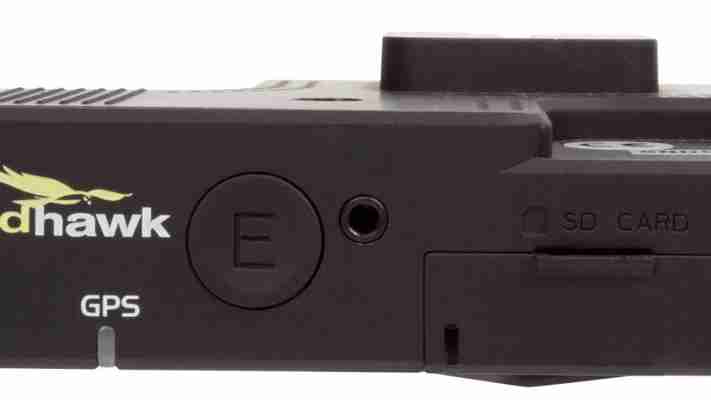The DC-2 is unusual among dashcams in that it that doesn’t have an integrated screen. Roadhawk, which predominantly targets the business market, says this is a deliberate safety decision that ensures its devices are both legal to use and don’t distract the driver. Having witnessed first-hand how the screens on other devices can divert your eye from the road, we agree this is the right approach. Dashcams are meant to help you record accidents, not create them, after all.
At first, we were concerned that getting the DC-2 in the right position without a screen would be tricky, but in practice it’s not even a minor problem. Roadhawk supplies two types of mount – one that sticks to the screen and a regular suction-cup mount – and both are easily adjustable to get the camera straight.

That’s not to stay the camera is entirely problem-free. The LEDs that are meant to let you know the DC-2 is recording and has latched onto a GPS signal are very dim and difficult to see in bright daylight. Also, the position of the power socket next to the mic input gave us some grief: it’s easy to plug the power adapter into the wrong hole, especially if you’re fumbling around in a dark car, potentially leading to missed recordings. The DC-2 is also relatively chunky – it was awkward to fit behind the rear-view mirror in one of our cars.
The device includes a sensor that automatically protects recordings when it detects a collision, and there’s an override button on the back if you want to make sure a specific event is not overwritten.
The video captured by the DC-2 is the best of any of the dedicated dashcams we've seen. In daylight, distortion is minimal and detail is sharp, partly thanks to optical image stabilisation. Even when driving down the motorway at 70mph we could easily make out number plates on passing vehicles.
Daytime footage
Night-time video is less impressive, however. The footage is quite noisy, especially on dimly-lit roads, and the windscreen appears to have a sparkly effect that makes it look as if it’s been raining, even in perfectly dry conditions.
Night-time footage
The GPS co-ordinates aren’t displayed at the bottom of the video file, as they are with other devices. Instead, you have to install Roadhawk’s dedicated software (provided on CD and for download from the company’s website) to view location data, which is displayed on a Google Map alongside the video. The software can also be used to alter the camera’s settings, letting you tweak parameters such as resolution, brightness, contrast and spot metering.

The camera can’t be connected directly to a PC – you have to remove the memory card and pop it in your computer. Roadhawk provides a USB adapter in the box for those who don’t have a memory card reader. It’s also worth noting that the unit comes with Roadhawk offers an optional, external GPS antenna for the DC-2 (part code 923, £20), in case a heated windscreen or special coating knocks out the satellite signal. There’s also the option to hard-wire the unit into the car’s electrical supply, and it can also be connected to commercial tracking systems.
Overall, we think the DC-2 offers a great balance between advanced features, video quality and distraction-free driving. At £180, it’s the most expensive dedicated dashcam we've seen, but we think the camera's quality is worth paying for. It wins a Recommended award.
| HARDWARE | |
| Max video resolution | 1080p |
| Max fps (at max resolution) | 30 |
| Field of view (degrees) | 127 |
| Max photo resolution | N/A |
| Memory card format | SD |
| Supplied memory card | 8GB |
| Screen size | N/A |
| Screen resolution | N/A |
| GPS | Yes |
| Speed camera alerts | No |
| Crash sensors | Yes |
| Battery capacity | N/A |
| Stated battery life | N/A |
| Dimensions (WxDxH) | 68x26x98mm |
| Weight | 125g |
| Connections | Mic in |
| ACCESSORIES | |
| Supplied mounts | Suction cup, adhesive mount |
| Also in box | Cigarette lighter charger, USB card reader |
| Supplied software | Roadhawk DC-2 camera software |







Leave a Reply